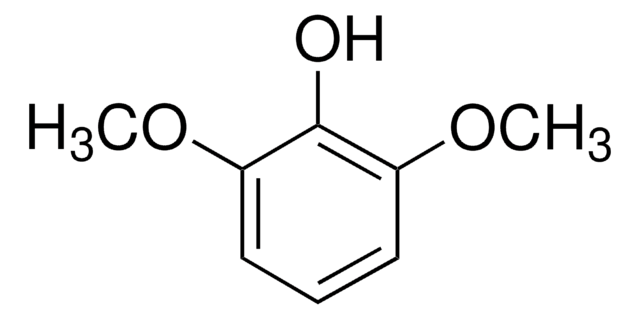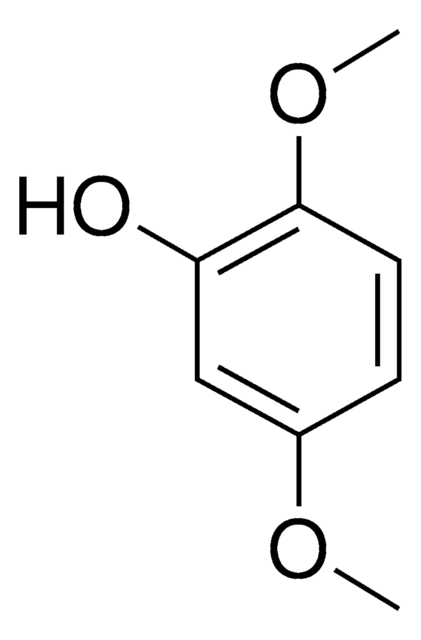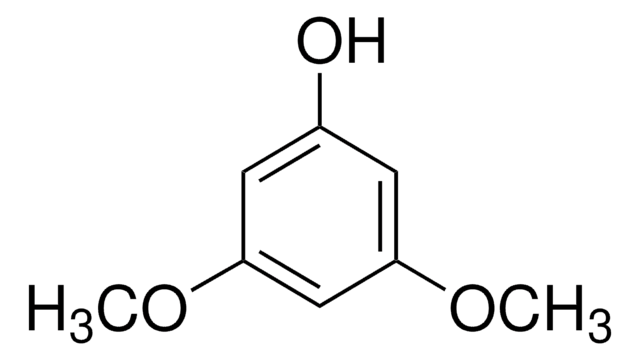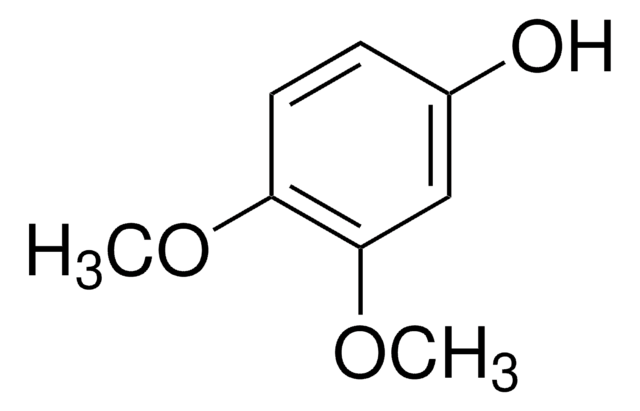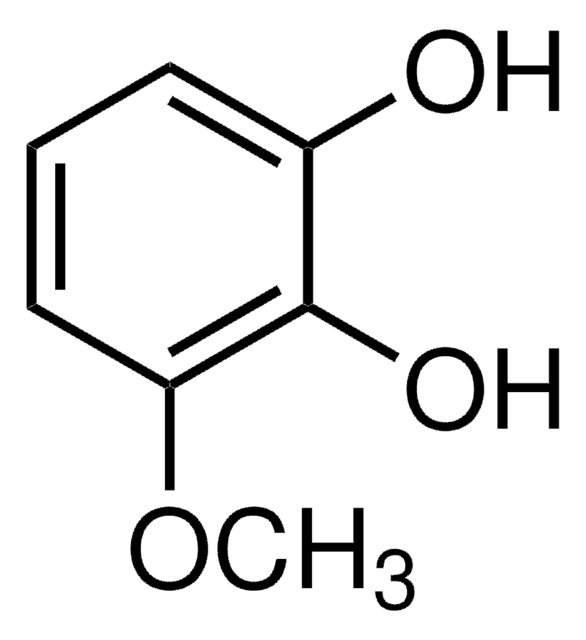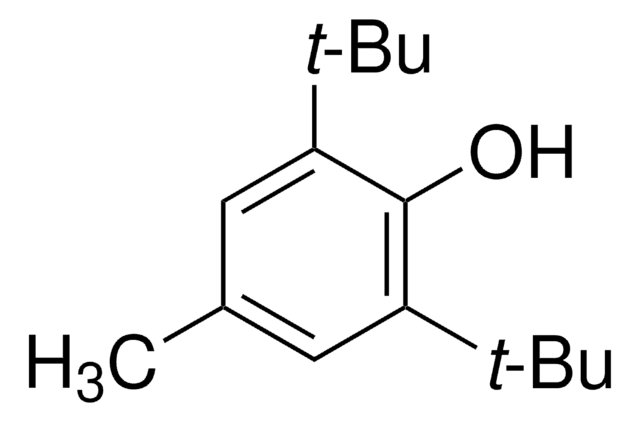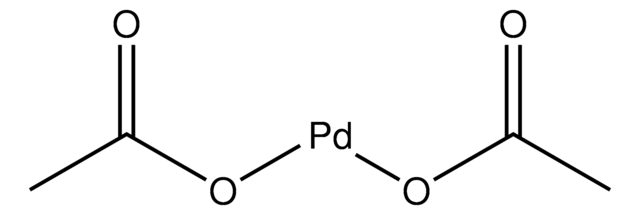126330
2,3-Dimethoxyphenol
98%
Synonym(s):
Pyrogallol 1,2-dimethyl ether
Sign Into View Organizational & Contract Pricing
All Photos(1)
About This Item
Linear Formula:
(CH3O)2C6H3OH
CAS Number:
Molecular Weight:
154.16
Beilstein:
1910045
EC Number:
MDL number:
UNSPSC Code:
12352100
PubChem Substance ID:
NACRES:
NA.22
Recommended Products
Assay
98%
form
liquid
refractive index
n20/D 1.539 (lit.)
bp
233-234 °C (lit.)
density
1.182 g/mL at 25 °C (lit.)
SMILES string
COc1cccc(O)c1OC
InChI
1S/C8H10O3/c1-10-7-5-3-4-6(9)8(7)11-2/h3-5,9H,1-2H3
InChI key
QSZCGGBDNYTQHH-UHFFFAOYSA-N
Looking for similar products? Visit Product Comparison Guide
General description
2,3-Dimethoxyphenol is a plant-derived phenylpropanoid compound that is glycosidated to form glycoside compound.
Application
2,3-Dimethoxyphenol has been used to study the nitrosative deamination of DNA bases induced by reactive nitrogen species (RNS) while studying the cause of mutagenesis.
Signal Word
Warning
Hazard Statements
Precautionary Statements
Hazard Classifications
Eye Irrit. 2 - Skin Irrit. 2 - STOT SE 3
Target Organs
Respiratory system
Storage Class Code
10 - Combustible liquids
WGK
WGK 3
Flash Point(F)
228.2 °F - closed cup
Flash Point(C)
109 °C - closed cup
Personal Protective Equipment
dust mask type N95 (US), Eyeshields, Gloves
Choose from one of the most recent versions:
Already Own This Product?
Find documentation for the products that you have recently purchased in the Document Library.
Shashi Kant Bhatia et al.
Bioresource technology, 289, 121704-121704 (2019-07-06)
Rhodococcus sp. YHY01 was studied to utilize various lignin derived aromatic compounds. It was able to utilize p-coumaric acid, cresol, and 2,6 dimethoxyphenol and resulted in biomass production i.e. 0.38 g dcw/L, 0.25 g dcw/L and 0.1 g dcw/L, and lipid accumulation i.e.
O Saoudi et al.
International journal of biological macromolecules, 128, 681-691 (2019-02-04)
This investigation may be of interest for researchers working on the determination of several biocatalytic properties of the laccase from Trametes versicolor. So, We will treated the effects of pH, temperature, several organic components and heavy metals by performing enzyme
Xiaozhen Wang et al.
Natural product communications, 6(9), 1285-1288 (2011-09-29)
Isoferulic acid (3-hydroxy-4-methoxycinnamic acid, IFA), the isomer of ferulic acid (4-hydroxy-3-methoxycinnamic acid), is a rare phenolic acid occurring in Rhizoma Cimicifugae. Unlike ferulic acid, which has been well investigated, the antioxidant activity of IFA has not been measured. In this
Márcia Pessêgo et al.
Journal of pharmacy & bioallied sciences, 3(1), 128-134 (2011-03-25)
Nitrosative deamination of DNA bases induced by reaction with reactive nitrogen species (RNS) has been pointed out as a probable cause of mutagenesis. (Poly)phenols, present in many food items from the Mediterranean diet, are believed to possess antinitrosating properties due
Qi Luo et al.
Environmental science & technology, 52(18), 10617-10626 (2018-08-28)
Perfluorooctanesulfonate (PFOS) is a compound that has wide applications with extreme persistence in the environment and the potential to bioaccumulate, and could induce adverse effects to ecosystems. We investigated the degradation of PFOS by laccase-induced enzyme catalyzed oxidative humification reactions
Our team of scientists has experience in all areas of research including Life Science, Material Science, Chemical Synthesis, Chromatography, Analytical and many others.
Contact Technical Service